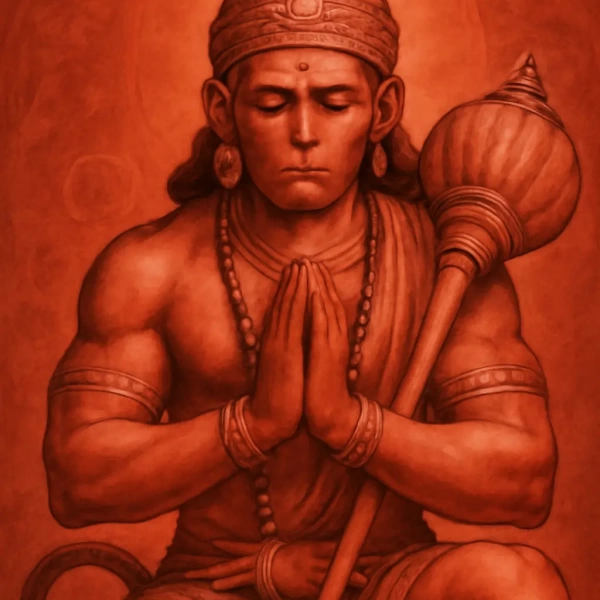
Introduction
Kumari Puja is an ancient Hindu ritual where a young girl between the ages of 2 and 10 is worshipped as the embodiment of the Divine Mother (Devi). She is treated as a living goddess and honoured with offerings, chants, and blessings.
The practice is rooted in the belief that before a girl reaches puberty, she is the purest, most unmanifest form of feminine energy (Shakti). By worshipping her, devotees honour this pure, creative power of the universe.
It is especially popular during:
- Durga Ashtami & Mahanavami in Navratri.
- Durga Puja in Bengal.
- Certain Fridays and holy occasions in South India & Nepal.
Mythological Significance
- In the Devi Mahatmya, the Goddess declares that she will manifest as a young girl to bless her devotees.
- Lord Ram performed Kumari Puja before his war with Ravana for divine strength.
- In Bengal, Swami Vivekananda famously performed Kumari Puja during Durga Puja at Belur Math to honour the divine feminine in living form.
- In Nepal, the tradition of the “Royal Kumari” still continues, where a girl is chosen and revered as a goddess.
Age-Wise Forms of Kumari
Hindu scriptures describe nine forms of the Kumari based on age, each representing a unique aspect of Devi:
| Age | Form | Symbolism |
| 2 | Kumari | Pure potential of divine energy |
| 3 | Trimurti | Power of Brahma, Vishnu, and Shiva |
| 4 | Kalyani | Bringer of auspiciousness |
| 5 | Rohini | Radiance and charm |
| 6 | Kali | Fierce protector and destroyer of evil |
| 7 | Chandika | Warrior goddess |
| 8 | Shambhavi | Spiritual union with Shiva consciousness |
| 9 | Durga | Invincible force |
| 10 | Subhadra | Benevolence and grace |
Want to know more about Deity Worship & Puja
Preparations Before Kumari Puja
For the Devotee (Host)
- Bathe early in the morning and wear clean clothes, preferably red, yellow, or white.
- Maintain a pure vegetarian satvik diet for the day.
- Avoid anger, arguments, or negative thoughts.
- Prepare the mind with chanting or meditation before the Kumari arrives.
For the Puja Space
- Clean the room and decorate it with flowers and rangoli.
- Place an asana (mat) for the Kumari to sit on — silk or cotton is preferred.
- Keep puja materials ready:
- Incense sticks & ghee lamp
- Sandalwood paste, kumkum, turmeric
- Rice grains (akshata)
- Red and yellow flowers
- Fruits and sweets (without onion or garlic)
- New clothes, bangles, bindis, toys
- Dakshina (money offering)
- Water in a kalash (copper or brass pot)
- Incense sticks & ghee lamp
Step-by-Step Kumari Puja Ritual
Step 1: Selecting the Kumari
- The girl should be healthy, cheerful, and from a family you respect.
- Ages 2–10 are considered auspicious, based on the nine Kumari forms.
Step 2: Inviting the Kumari
- Welcome her at the entrance with a smile and reverence.
- Perform a symbolic arati or sprinkle water to purify the entry.
Step 3: Washing the Feet
- Seat her on a low stool and gently wash her feet with clean water.
- Wipe with a soft cloth, apply sandalwood paste, and offer flowers.
Step 4: Offering the Seat
- Invite her to sit on the prepared asana facing the deity or altar.
Step 5: Applying Tilak
- Place a red kumkum mark on her forehead and turmeric on her hands.
Step 6: Chanting & Offering
- Chant “Om Aim Hreem Kleem Chamundaye Vichche” or the Devi Kavach.
- Offer flowers, rice, incense, and light the ghee lamp.
Step 7: Offering Naivedya
- Present satvik food — puri, halwa, kheer, or fruits.
- First offer to the Goddess, then to the Kumari.
Step 8: Seeking Blessings
- Bow before her, touch her feet, and silently pray for her blessings.
Step 9: Giving Dakshina & Gifts
- Offer clothes, ornaments, bangles, bindis, and money.
- Escort her respectfully back to her guardians.
Symbolism of Ritual Acts
- Washing feet – purification and welcoming divine energy.
- Kumkum – third eye activation, protection.
- Flowers – devotion, fragrance of purity.
- Food offering – sharing abundance with the Goddess.
- Dakshina – gratitude and completion of the ritual energy cycle.
Benefits of Kumari Puja
- Brings prosperity, protection, and peace to the household.
- Enhances spiritual merit (punya).
- Promotes respect for girl children in society.
- Invokes blessings of Durga, Lakshmi, and Saraswati together.
- Purifies the home environment.
Do’s and Don’ts
| Do’s | Don’ts |
| Treat the Kumari with utmost respect | Do not shout, argue, or show anger |
| Prepare fresh, satvik food | Avoid stale, packaged, or onion-garlic food |
| Keep all arrangements ready before her arrival | Don’t make her wait or feel uncomfortable |
| Offer meaningful gifts | Avoid giving anything used or old |
Frequently Asked Questions (FAQ)
Q1: Can Kumari Puja be done outside Navratri?
Yes, it can be done on Fridays, Ashtami, or any day dedicated to Devi.
Q2: Can I worship more than one Kumari?
Yes, you may worship 2, 5, 7, or 9 girls representing different forms of Devi.
Q3: Does caste or community matter?
No, devotion and purity of heart matter more than birth.
Q4: What if no Kumari is available?
You can symbolically worship a picture or idol, though the living Kumari is considered more auspicious.
Q5: Can boys participate?
Boys do not act as Kumari but can assist in the ritual arrangements.
Closing Prayer
Ya Devi Sarvabhuteshu Matrirupena Samsthita
Namastasyai Namastasyai Namastasyai Namo Namah
Meaning: Salutations again and again to the Goddess who resides in all beings as the Mother.
Conclusion
Kumari Puja is not merely a festival ritual — it is an expression of reverence for the feminine divine energy that sustains life. By honouring the Kumari, we learn humility, respect, and gratitude. Whether performed during Navratri or on any auspicious day, this puja fills the home with spiritual energy, blessings, and joy.


